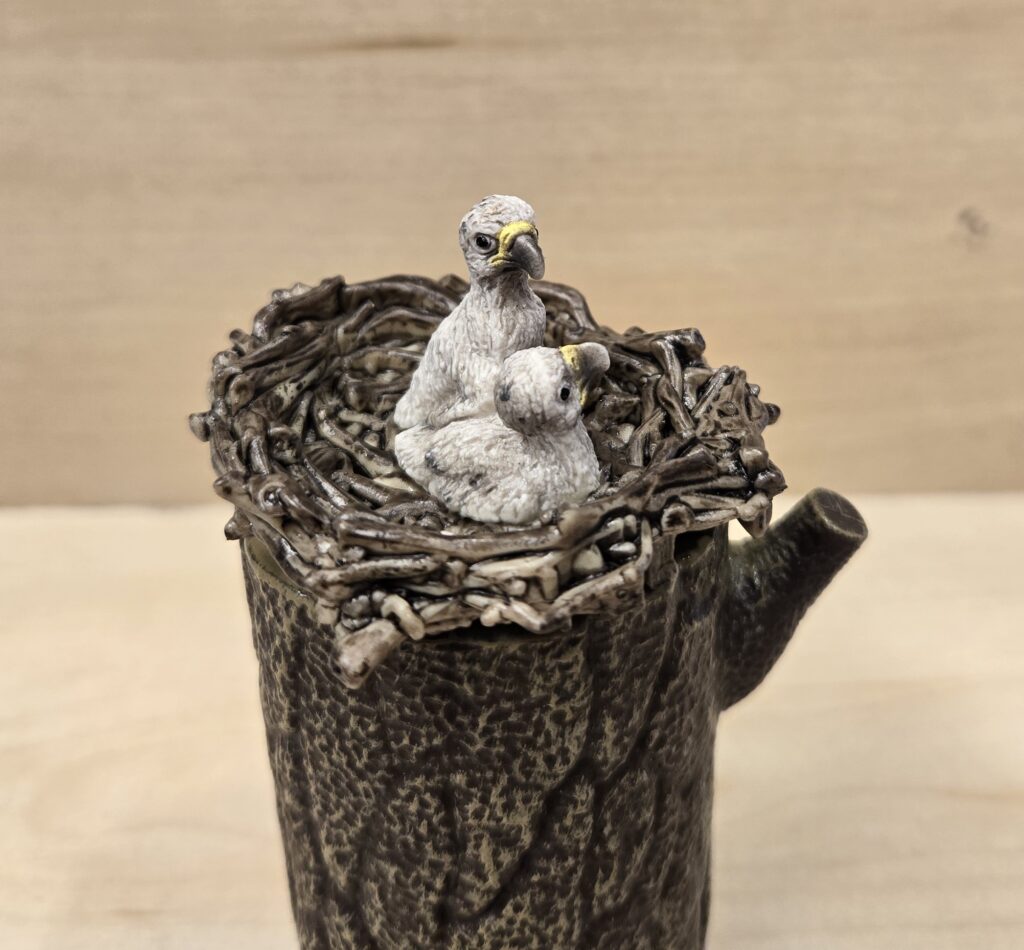The bald eagle (Haliaeetus leucocephalus) and the golden eagle (Aquila chrysaetos) are not closely related, at least not within the context of the family Accipitridae. The latter is considered a ‘true’ eagle whereas the former is a buteonine hawk. Yet, the two birds have similar breeding and nesting habits. Both birds typically mate for life (although a bird may find a new partner upon the death of its mate). Both build large nests of sticks that they reuse over multiple years (although golden eagles will often build several nests and alternate which one they use from year to year). The bald eagle nest is the largest among North American birds and a pair will often add additional sticks each year. The location of the nests can be quite different however. Golden eagles prefer to nest on rocky cliffs, usually at the maximum elevation of the surrounding land. Bald eagles nest on a variety of substrates, including on trees, cacti, and manmade structures, and often near water. In 2012, Schleich produced an eagle nest with two chicks. They did not specify to which species the figure represents, but that it was in their Wild Life America line suggests it was modeled after the nest of either the golden or bald eagle, and frankly it can easily function well for both species (hence, both species are tagged for the Blog). Today we will be looking at that nest! (Note, the first five pics were taken with the nest on top of one of the containers that 4D Master insects come in; the stump is not part of the eagle nest.)

The nest is approximately 5.5 cm wide across its widest points. The nest itself is made of up meticulously sculpted individual sticks and twigs. In the center are two chicks, with one sitting up and one more relaxed. The chicks are permanently affixed to the nest. Without knowing the precise age the chicks represent, I cannot calculate a scale, but they seem to scale well with most ‘standard-sized’ bald and golden eagle figures (see also below).


The nest itself is painted brown with dark highlights. The chicks are a dirty off-white highlighted with black eyes, yellow claws, and a dirty grey beak rimmed with yellow. The yellow highlights around the beak actually make me suspect this figure was modeled after the golden eagle specifically, as that seems to be a more common feature with its chicks. While the sticks have a semi-gloss paint, the chicks themselves are matte and are sculpted with a lot of detail in their down. Honestly, there is quite a bit of both structural and paint detail in a toy of this size!


Because it’s a small and rather simple presentation, there isn’t a lot to say about it. For those who like to collect different developmental stages for some animals, create families, or make dioramas, this little nest comes recommended. I bought it to complement my golden eagles (below). I first had the Kaiyodo Natural Monuments of Japan adult, but I later thought to replace it with the solid-piece Colorata figure (I wasn’t sure how well the Kaiyodo would hold up over time). However, once I got the Colorata model in-hand, I could not decide which to keep; they are similar in some aspects of their styles and scale very well together. I finally decided to keep both as a pair, and then when I found out about this eagle nest, I knew it would solidify my decision to keep both! However, being gashapon-style figures, the adults are probably a bit small in comparison to the chicks. Still, they make a nice trio! And while I don’t have it to compare, I suspect the Mojö Fun golden eagle might scale better with them.

Disclaimer: links to Ebay and Amazon on the AnimalToyBlog are affiliate links, so we make a small commission if you use them. Thanks for supporting us!




Neat! Although the nest itself looks a bit small compared to those chicks. Eagle nests are massive! Cool toy though, I’ve never seen this one before.